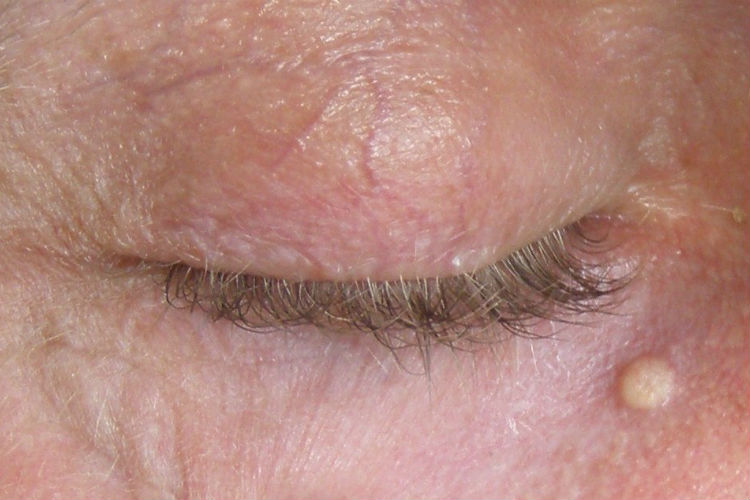Milia removal
Milia (the plural of ‘milium’) are small white or yellowish raised cysts, bumps or spots on the skin. They are normally found around the eye area and cheeks, but can appear anywhere on the face or body.
Unlike a pimple or spot, milia feel quite hard, almost like a small piece of grit under the skin, and do not have any redness or inflammation as you might expect with whiteheads or acne-related spots.
It is very common to have several milia appear in clusters on the skin around the eyes, but it is possible to have just one milium at a time and they can occur on any part of the body, including the groin and genital area.

What causes Milia ?
Milia are caused by the build-up of keratin (a naturally occurring protein) beneath the surface of the skin. There are many different potential causes for milia, damage to the sweat glands after skin trauma, or in the case of newborn babies, blocked sweat glands.
Milia often develop when the ducts leading to the skin surface are clogged up, such as after an injury, blockage by rich creams/products (such as suncream) that prevent the skin ‘breathing’ as normal. They can also be caused by dry dehydrated when dry flakes of skin block the pores.
Cell turnover usually slows down as we get older, making mature skin more susceptible to recurring milia.
Milia are not contagious or harmful in any way, there is no known genetic link with milia and the condition is not thought to be hereditary, but some people may feel self-conscious about them, especially if they are on a visible area of the skin such as the face.
Milia can sometimes take a long time to disappear naturally, but can be professionally removed through a simple, minor procedure.
How to get rid of Milia ?
If you regularly suffer from many milia you should consider your dietary intake and the cosmetic products use on your skin. However, Milia can be treated very quickly and easily using electrolysis.
Milia treatment is performed by inserting a tiny electrolysis needle (about the size of an eyelash) and applying a Short Wave Diathermy or Thermolysis current which is an AC/RF/HF (Alternating current, radio frequency, high frequency) current.
The energy created breaks down the hard fatty tissue and allows it to disperse into the body.
When correctly performed a ‘popping’ sensation is often experienced as the needle pierces the keratinised centre of the Milia.
1 – 2 days later a tiny crust may form which must not be removed but left to drop off.
Large Milia may require a 2nd treatment 3-4 weeks later.
As electrolysis was invented by an ophthalmologist for in-growing eyelashes over 100 years ago, it is perfectly safe to use around the eye area allowing milia on the eyelids and even between the eyelashes to be treated perfectly safely.
What to expect on the day
How long does it ?
This will depend on the number of veins to be treated. We normally limit treatment to 15min on each cheek.
Are there any potential side effects ?
1. Bruising, swelling, redness, pain/stinging at the treatment site.
2. The treated area and surrounding skin may feel hot for 48hrs
3. The skin may itch as the healing process takes place
A treatment session costs £199.
